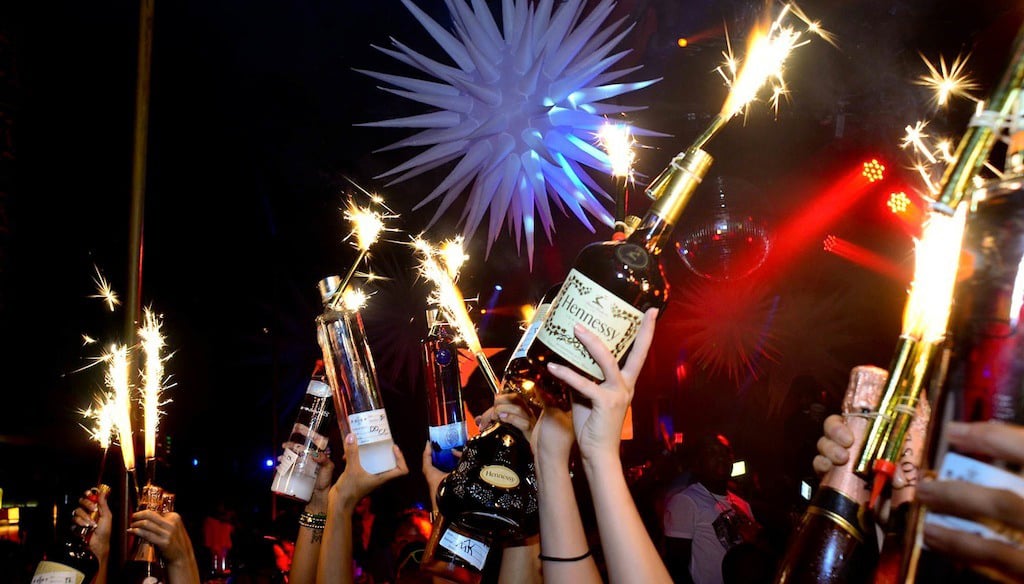
Every club patron will have a run-in with the door sooner or later. Be it the guest list, dress code, or girl to guy ratio in their party, the door makes the rules – the guaranteed speed bump of the night. But once bottle service comes into play, things change.
Suddenly, the rules can bend a bit, so long as a particular guest is looking to be the "it" factor that night. That means throwing down a serious amount of money to claim the best piece of real estate in the venue - whether it's by the DJ booth or right smack in the center of the dance floor.
A successful bottle service program serves as a tremendous stream of revenue for a venue. While early examples of bottle service programs have been around since the late '80s, the early 2000s took it to a whole new level in cities like Miami and Las Vegas.
Today, it's an experience that everyone covets, and many times the only way you'll be able to set foot into some clubs. But there have been significant changes in the game.
As the economy changes, so do your tactics to appeal to your clientele. The high-end clientele is still readily available, but unless you're running LIV or Marquee, chances are they won't be frequenting as often.
According to Nightclub & Bar's list of Top 100 grossing nightclubs in 2014, Vegas once again ran supreme with XS, Hakkasan and Marquee leading the way. Did we mention they each pulled in between $80 - $105 million?
Thing is, not only do they bring in the talent, but they're also located in a city that's overrun with tourists looking for that bottle service experience on a daily basis. If you're not in that situation, you'll need to adapt.
One recent trend that Peggy Millard, co-founder of New York City-based nightlife consulting firm Service Professional Intelligence, have been discounts - that's right, the same you find at retail stores nearly every weekend.
"People are looking for deals everywhere these days and our industry is not immune to it," Millard says.
While in the past many patrons had a mentality of showing the venue how much they could spend, Millard believes that today it's about the negotiation factor. If your venue happens to cater to that high-end clientele, be sure that your bottle hosts have a good network. The better the host and their network, the more regular high-paying patrons you'll have.
"Good bottle hosts make sure their clients are always very well taken care of and often go above and beyond the call of duty to make sure they come to their club regularly," Millard says.
Big spenders like big bottles, but unless you have an intimate space that solely focuses on that crowd, you'll want to pay close attention to your products.
For those venues that have a slew of tables, Millard suggests to "scale your menu so that you have items priced reasonably for your $500 minimum group," but still have those high-priced products in case "Mr. VIP" shows up.
Most importantly, "the pricing should also be put together in a way that psychologically, it is easy to make the decision to spend a little more for a better product," Millard says.
While the revenue numbers in the Top 100 list may not reflect it, the number of high-end clients that frequent nightclubs consistently have dropped.
As Millard puts it, the "whales" (aka big bottle clients) that can spend up to $50,000 in a single night are out there, but don't expect them on a weekly basis. That's why there’s been a recent shift toward the concert hall concept.
If you're venue can book talent that will draw a crowd, then the door will make up for what the tables can't produce. Tables do bring in plenty of revenue, but it can be your sole source of income. That’s when a cover charge and ticketing options come into play.
"Clubs with certain DJ acts are sold out before opening their doors," Millard says, using Vegas as a prime example for venues that are able to consistently do this.
